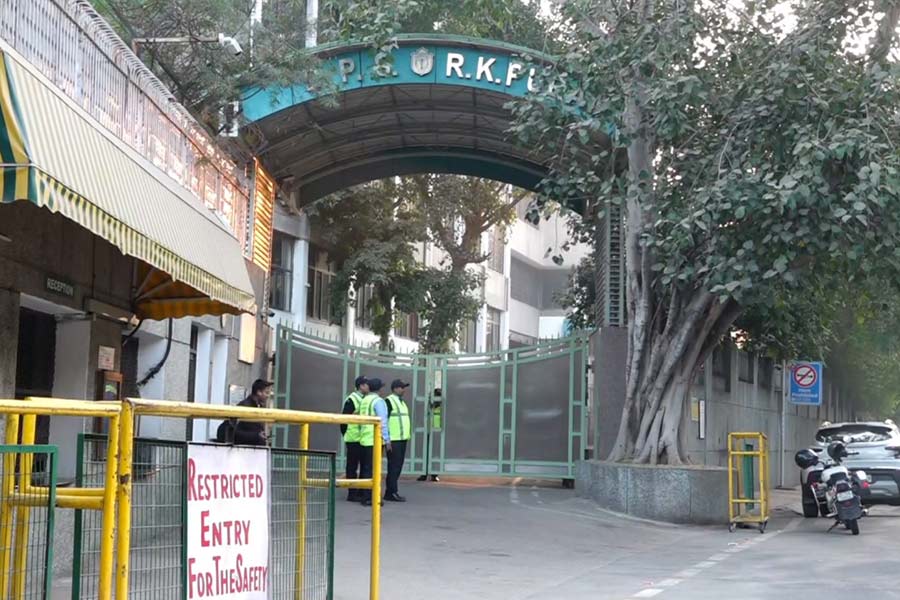Books have kept Class IX student Tannistha Nandi busy since childhood. Nothing unusual in that — except that she was writing some of them. A fan of J.K. Rowling and Rick Riordan, Tannistha has used the lockdown to work on a novel that will reinforce her love for fantasy. It is not her first though. The student of Indus Valley World School in Calcutta has already authored two books, the first was launched in 2017, when she was only 10.
“My first two books are part of a trilogy. I am working on the third part alongside my first standalone novel,” says the girl who is no stranger to proofreading and promotions. Her books — The Secret of Goldbug Castle and City of Mysteries — are available online.
Tannistha is part of a growing tribe of students who have one or more published books to their credit by the time they leave school. Some start as early as in their tweens, their parents often acting as marketing agents. And online platforms, writing courses, story-writing competitions and self-publishing options have opened up a world of opportunities.
Debraj Mehta was only six when his first book, Sopney Bhashi, was released at the Calcutta Book Fair in 2019. It was a compilation of short stories and poems written in both English and Bengali. He went on to release his second book, Sopner Desh, at the Oxford Bookstore a few months later. His third, Kalpana’r Phulki, was published last year. A fan of Sukumar Ray, the eight-year-old loves writing fiction that his friends can relate to.
There are many schoolchildren like Debraj and Tannistha who are keen on taking their passion for writing to the next level. Giving them the push are publishing houses such as Scholastic India, which brings out a short story collection by kids every year. “We consistently get manuscripts from students. We have been running a nationwide programme for 14 years now where students submit short stories on a given topic. The stories are reviewed and shortlisted by other students and then by a panel of authors. The 10 best ones are published in an anthology — For Kids by Kids. Some winners have also got a contract from us,” says Shantanu Dutta Gupta, head of publishing at Scholastic India.
However, not all manuscripts publishers receive are top notch. “Kids are now expected to excel in everything. There is pressure on them to get published, even self-published. But I am yet to see a self-published child author become a successful writer. Since the lockdown many, adults and children have taken to writing but not everything is worthy of publishing,” Dutta Gupta adds.
Only a handful of student authors upgrade their skills after school. Deadlines may keep them as busy as homework but writing is often only an accomplishment to these kids, adding weight to their already colourful resumes.
“Everyone’s a writer and an artiste thanks to the Internet and social media. But ultimately it is the reader’s choice what he or she wants to read,” says writer-columnist-screenwriter Anand Neelakantan, an inspiration to many young writers. According to the author of Asura: Tale of the Vanquished and many more bestsellers, there may not be much quality check since the advent of online platforms and self-publishing but “such books seldom reach the top of the charts”. “Self-published books are like free YouTube content. Everybody has access to them but not everything is good. Students are blogging, writing and posting on social media. Some go viral too. But few go on to become writers,” Neelakantan says.
Such is the craze to get their children published that more and more parents are enrolling their wards in creative writing courses and workshops, over and above the storytelling and creative writing clubs run by schools. Many of these courses offer children the opportunity to get published at least online. “We have over 100 students from leading schools in the city enrolling for our writing programmes. During the lockdown we went virtual and opened doors to students from all over the country and even abroad,” says Richa Wahi who runs Word Munchers, a creative writing learning centre that celebrated its ninth birthday last year. Her students are six to 15-year-olds, most of them going on to publish e-books and on various national and international online portals.
Many young enthusiasts are eager to see their names in print as they learn how to write. Vivaan Sanghvi of The Heritage School, Calcutta, was only nine when his short story was published online. The achievement has egged him on to write many more.
The self-publishing option has come as a boon for many. Muskaan Choudhary of Class XII self-published her first collection of poems, Pea Pod: A Home for Misfits, last year. The student of Laxmipat Singhania Academy, Calcutta, is now working on her debut novel. She wants to study engineering but learning how to write has helped her express herself better. “It is a skill that will also help me in my professional life,” says the student.
Young authors are also getting a chance to take part in panel discussions. A literature meet for children, organised in January 2019, gave young published authors a chance to share the stage with their adult counterparts. “The session gave student authors a sneak peek into what lies ahead if they take up writing professionally. Many creative writing workshops were also organised on the side,” says Bali Sanghvi, an organiser of the event.
This generation really does believe in starting young!
DIY Thus

A file photo of Ashwin Sanghi Photo by Pabitra Das
Self-publishing has made the publishing world democratic. Ten years ago, if you wanted a book out you sent your manuscript to the publishers and waited for them to get back. The latter, burdened with a huge backlog of manuscripts, would either not get back or only with a one-line rejection mail. That was how the industry worked. The other alternative was the vanity press route. You had to tie up with a small-time publisher to get your book printed and distributed. You had to buy the first lot of copies too, to take over the risk from the publisher. The traditional route offered no guarantee of getting you published and the vanity route involved a lot of cost. Self-publishing offers the middle path. You don’t incur as much cost upfront and you can get your manuscript out.
Self-publishing is like those reality shows where a complete rookie can perform and get noticed by the world. Many authors are getting discovered in the process. Of course, the odds of being discovered continue to be terrible. But every now and then we will get a Fifty Shades of Grey or The 4-Hour Work Week breaking out of the self-publishing mould and becoming a bestseller.
My first book, The Rozabal Line, was self-published. In 2005-06, I approached many literary agents but there weren’t any interested in my theology-based thriller. I started writing to publishers directly and kept receiving rejection notes. In 2007, a small self-publishing company, Lulu, started in the US — one of the few self-publishing outfits at that time. I uploaded my manuscript on Lulu and my book got listed on Amazon.
That first year I sold 800-900 copies. An average self-published book sells 50-60 copies in a lifetime. But I was doing a lot of self-marketing. I’d come out with a YouTube trailer and send out free copies to get reviewed. I was getting active on social media. I was using every bit of jugaad to sell that additional copy. I started looking for distributors in India who could help get my book into stores. I told them to pay me when they sold the stock. Only one Chennai-based company got back. They had just set up a publishing unit, Westland Books. So, my search for a distributor finally led me to my publisher.
Ashwin Sanghi, bestselling author











